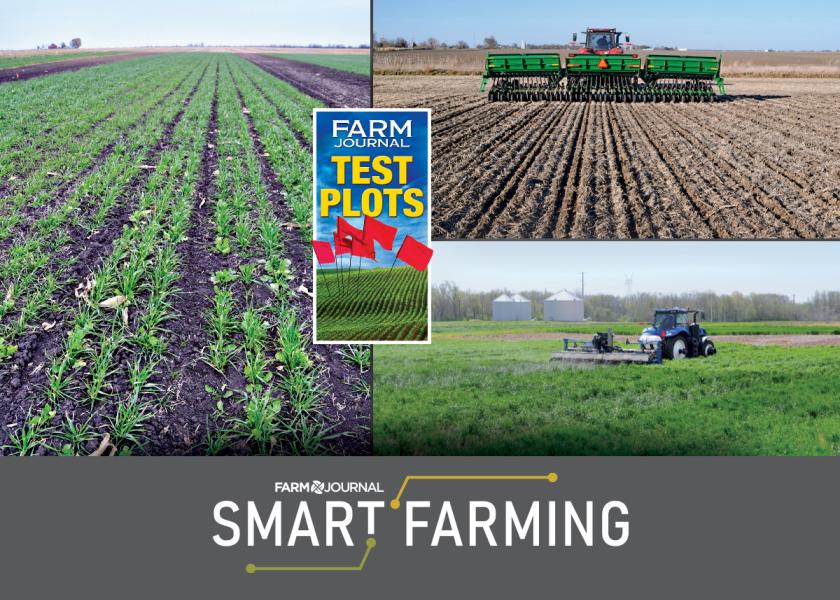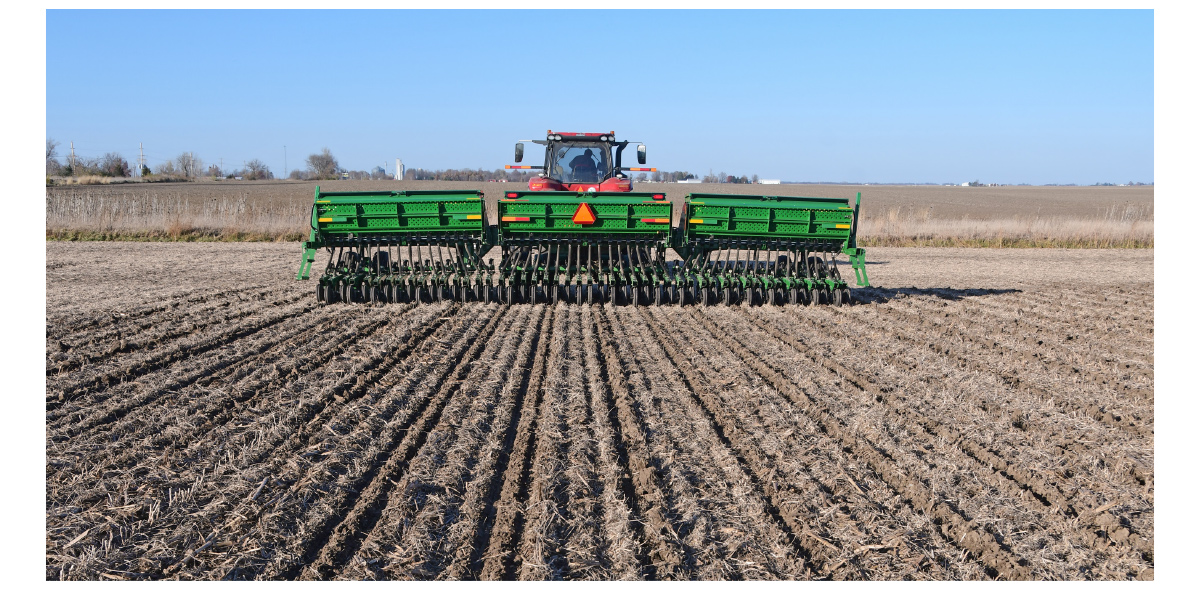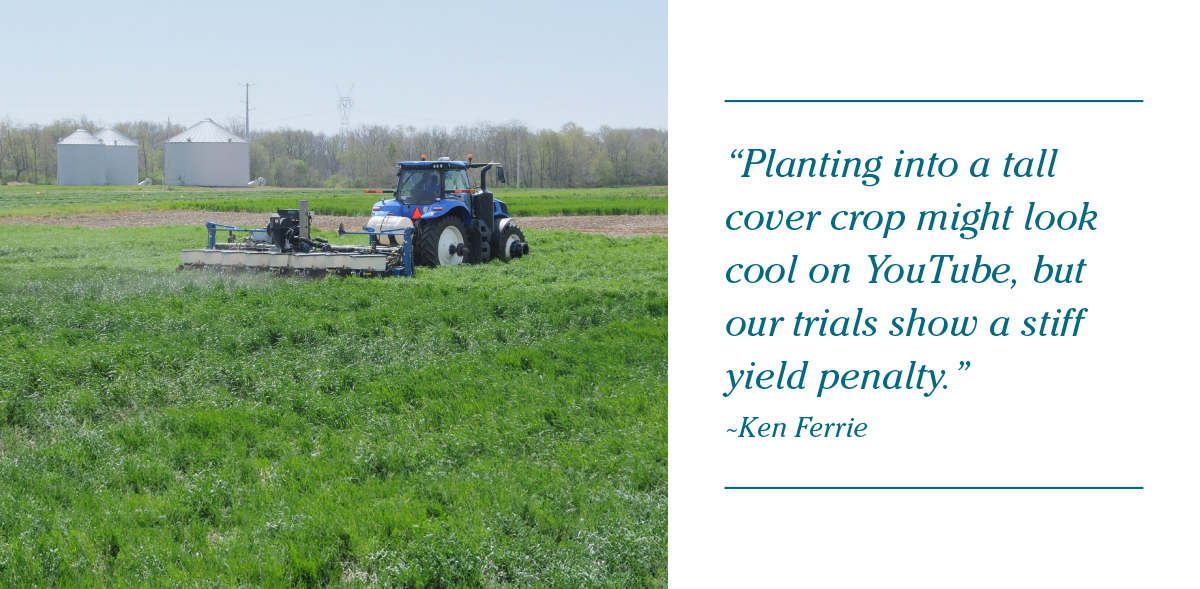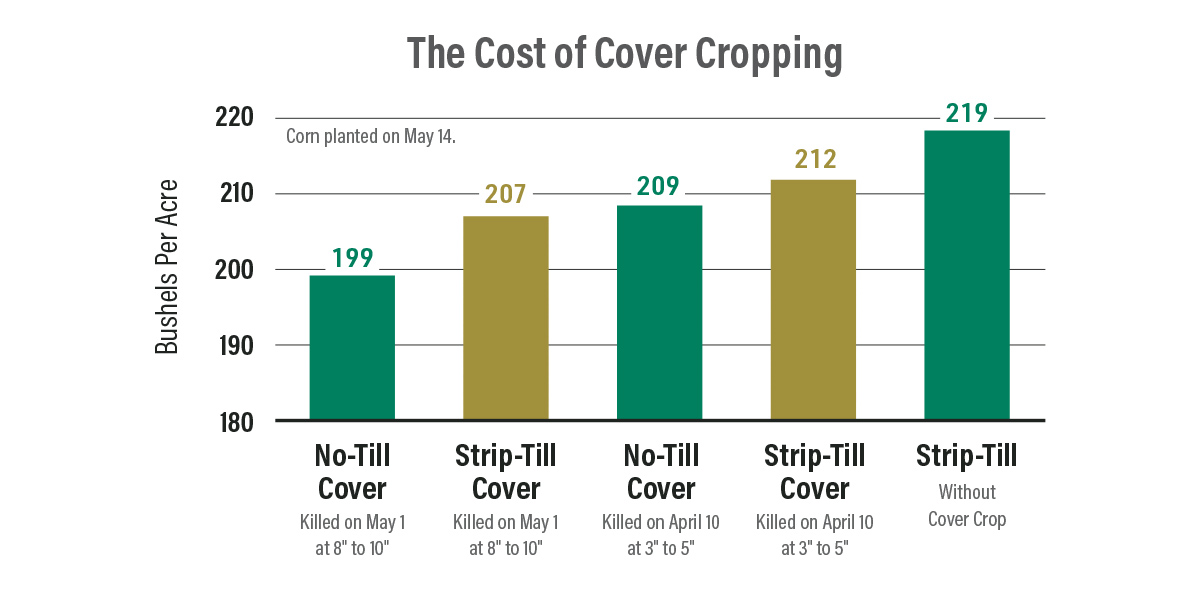10 Tips to Shorten Your Cover Crop Learning Curve

For years, governments have channeled their support for agriculture through incentives that nudge you in directions they feel are beneficial, such as erosion control, clean water and wildlife habitat. In the near future, those incentives will also include climate change mitigation.
You’ll be rewarded for practices that minimize soil disturbance and sequester carbon, such as no-till, strip-till and cover cropping. Decades of on-farm studies, conducted by Ken Ferrie and the Farm Journal Test Plot program, prove those practices only perform their best in a vertical farming system, as opposed to horizontal tillage which creates yield-limiting soil layers.
Hence our series of articles to help you transition to vertical farming by removing dense and compacted soil layers, balancing fertility and pH through the soil profile and learning vertical tillage techniques. The final requirement to reap benefits from climate-based incentives is mastering cover crops.

“Farmers who learn as much as possible about cover crops now will fare much better than those who go whole hog the first time they plant cover crops,” says Ferrie, who serves as a Farm Journal field agronomist. “No-till and covers need to become part of your farm resume before incentive programs, or climate-conscious landowners, require you to grow them.
“The experience you gain by trying cover crops on a small scale will help you evaluate deals offered by the government or by landowners,” Ferrie adds.
Here are some tips to shorten your learning curve:
1. Set an objective.
Decide what you want to accomplish — for example: compaction mitigation, erosion control, improved soil health, increased biodiversity and nitrogen fixation. Then choose a cover species that accomplishes your goal and fits your climate and farm operation.
2. Think like a scientist — neither optimistic nor pessimistic.
“If you or a neighbor has had a bad experience with cover crops, try to figure out what went wrong and use that knowledge to help guide your new trials,” Ferrie says.
3. Start small.
“Expect hiccups, and learn from them,” Ferrie advises.
4. Seize can’t-miss opportunities.
“While most cover crops do not produce an immediate financial return, there are a few situations where planting covers is a no-brainer,” Ferrie says. “One is planting a cover after silage harvest and grazing or chopping it for forage, and where sandy soil is subject to blowing, planting into a cover can reduce wind erosion and protect the young plants.”
5. Begin with easy-to-manage cover crops that winterkill.
Oats and radishes top that list. “Then learn to manage covers that overwinter and must be terminated in the spring because they will be required for many carbon sequestration incentive programs,” Ferrie says.
6. Don’t expect higher yield or lower production cost, at least not right away.
“To achieve those the first year, all the stars, including Mother Nature, must align, and they seldom do,” Ferrie says. “You will be setting yourself up for disappointment.”
7. Calculate both your financial ROI as well as your true ROI.
“Knowing your actual ROI is essential for evaluating incentive programs, land rental opportunities and your own stewardship goals, such as improved soil health,” Ferrie says.
8. Become an expert terminator.
“Killing cover crops on time in the spring is crucial,” Ferrie says. “Our studies show the quicker you kill a cover, the less yield drag — but the sooner you kill it, the less environmental benefit. If you sign a carbon-based contract, understand how long your cover needs to grow. If you use a custom applicator to terminate your cover crop, let him know this ahead of time. Have a Plan B, such as a plane, drone or ATV sprayer to kill the cover if wet weather keeps your ground applicator out of the field — covers will jump when the soil warms up. Planting into a tall cover crop might look cool on YouTube, but our trials show a stiff yield penalty.”

9. Learn to manage pests.
“Anytime you have a green cover, you’ll have more insects, disease and varmints such as voles,” Ferrie says.
10. Understand the risks.
“Some years, covers delay planting by keeping soil wetter and colder,” Ferrie says. “If it turns dry in June, they might pull out all the soil moisture and lock up the cash crop until it rains. This can have a big impact on yield.”
Calculate Your Cover Crop ROI
“In our studies, we’re excited to see equal yields, let alone a yield increase, following a cover crop,” says Farm Journal field agronomist Ken Ferrie. “But equal yield leaves no room to pay for seed, establishment and termination of the cover crop.”
“Deciding whether cover cropping is sustainable for your operation requires knowing the cover crop’s financial ROI, income minus expenses, and its true ROI, which includes less tangible factors,” Ferrie says. “Some growers want to reduce erosion, water runoff or nutrient leaching, improve soil health or increase biological diversity. For them, growing a cover crop might produce a negative financial ROI, but knowing they are improving their land creates a positive true ROI.“
Based on Farm Journal studies, the financial ROI from cover crops won’t be high enough to persuade many farmers to plant covers on cash-rented acres.

“Within our customer base, the cost of establishing cover crops ranges from $35 to $85 per acre,” Ferrie explains. “If yield slips, and it often does, that puts pressure on growers.”
That situation is likely to lead to strong incentive programs from government agencies.
“Right now, current incentive programs can offset some of your cost as you learn to grow cover crops and calculate financial and true ROI,” Ferrie says. “With that knowledge, you can evaluate future incentives that might benefit your farm and the environment.”







